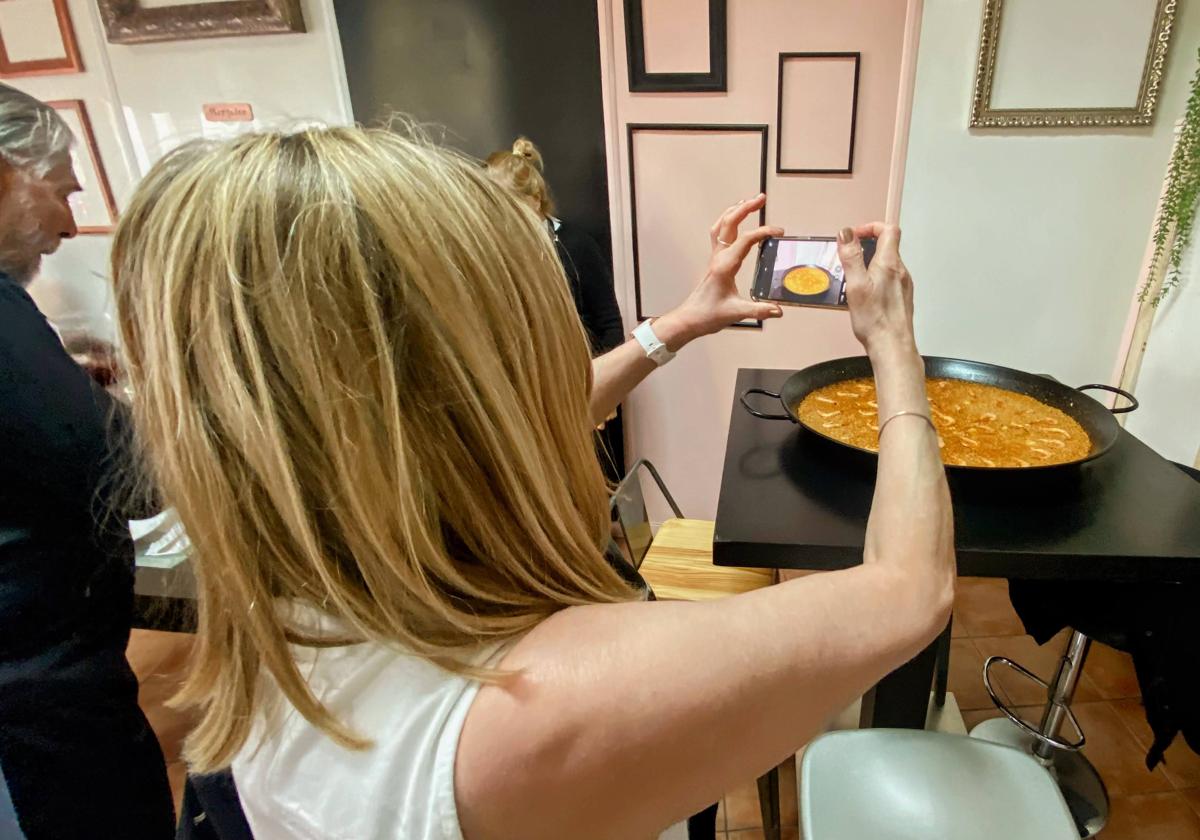Shopping, Cooking, and Eating: Tourists Learn to Cook Like a Local in Alicante
A tour offers visits to the stalls of Alicante's Central Market and demonstrates how to prepare a traditional menu of arroz del senyoret, capellán salad, and sangria.
Tere Compañy Martínez
Alicante
Saturday, 8 March 2025, 07:20
Every true Alicante local knows that the secret to a good rice dish lies in the broth, and if it's a seafood dish, also in the salmorreta. This is a concept that Mark, Margaret, and Deborah are about to learn during one of the guided tours of the Central Market organised by Alicante Cooking Workshop. Increasingly, tourists are drawn to Alicante's gastronomy, which has become another attraction of the city. Thus, this Scotsman, this Polish woman, and this Englishwoman have joined a tour that invites them to touch, taste, and cook the local produce themselves, creating the jewel of Alicante recipes: arroz del senyoret.
The proposal is simple: in small groups, tourists tour the Central Market, from the vegetable stalls to those of fish or meat, to buy the best ingredients one by one. The menu includes the famous rice dish and also a tomato and capellán salad, some olives, Easter sausage, a bit of ham, and, of course, sangria with vermouth for that Alicante touch.
.jpg)
-kX5H--1200x851@TodoAlicante.jpg)
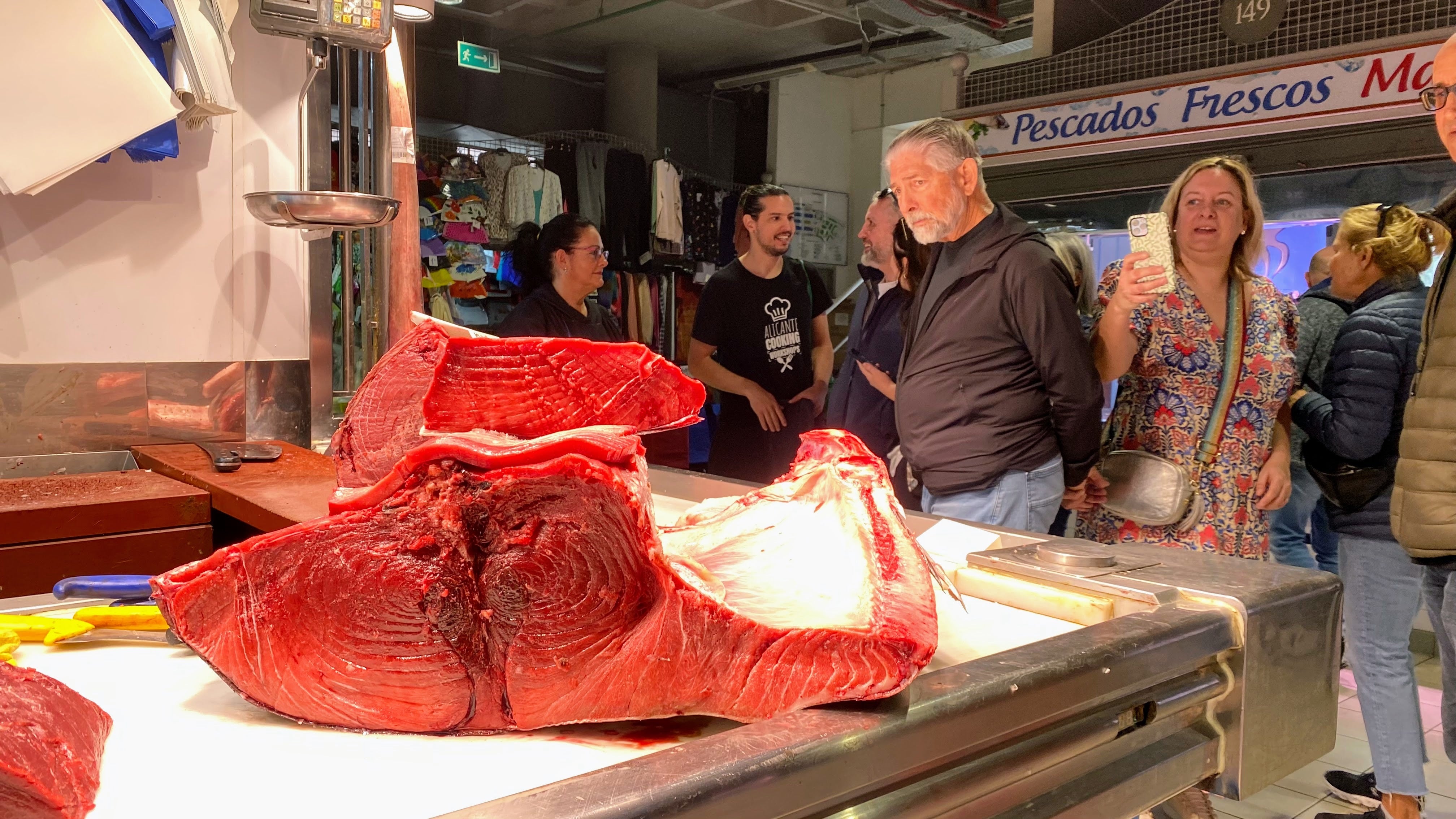
For many, especially those from Northern Europe, visiting Alicante's Central Market, the largest covered market in Spain by number of stalls, is one of the highlights. The guide, Fede, explains in both Spanish and English some important details: that in Alicante, they make rice, not paella; that salmorreta originated with the city's fishermen; or that Tuesdays are a good day to buy fish for its freshness. These are precisely the particularities that tourists seek by signing up for a visit where the aisles, with dozens of stalls and offerings, captivate the visitors.
But the best is yet to come. After securing the tomato in the vegetable section; some cuttlefish and squid in the fish section; capellán and olives in the salted section, and some ham in the cured meats, the next step is to get to work. Lis, from Vigo, knows this well, as she uses her skills as a fishmonger to flake the capellán. Meanwhile, Alina, her husband Jim, her brother Mario, and her sister-in-law Margarita grate the tomato for the salmorreta and cut the sausage. They are from the United States, though of Latin American origin. Others chop the garlic, cut the cuttlefish, or prepare the prawns to have everything ready to cook the rice.
.jpg)
-kX5H--1200x841@TodoAlicante.jpg)
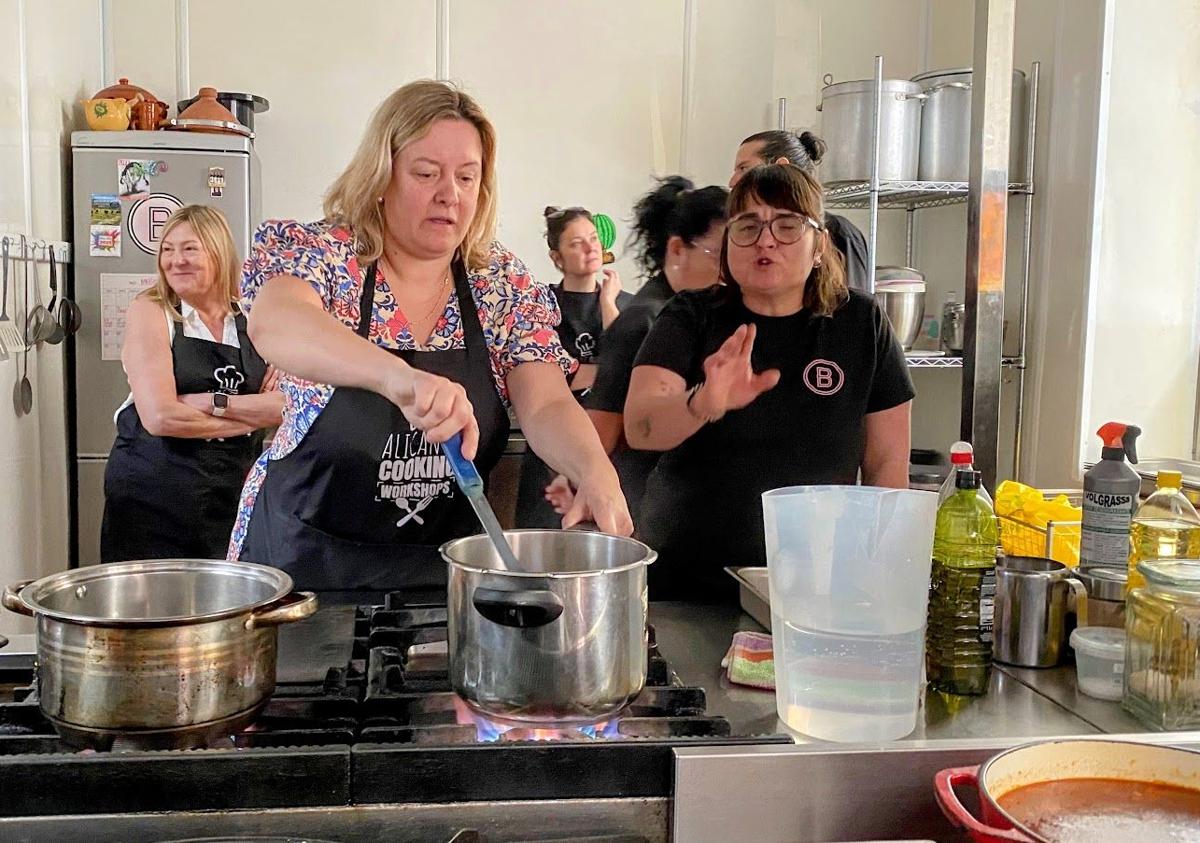
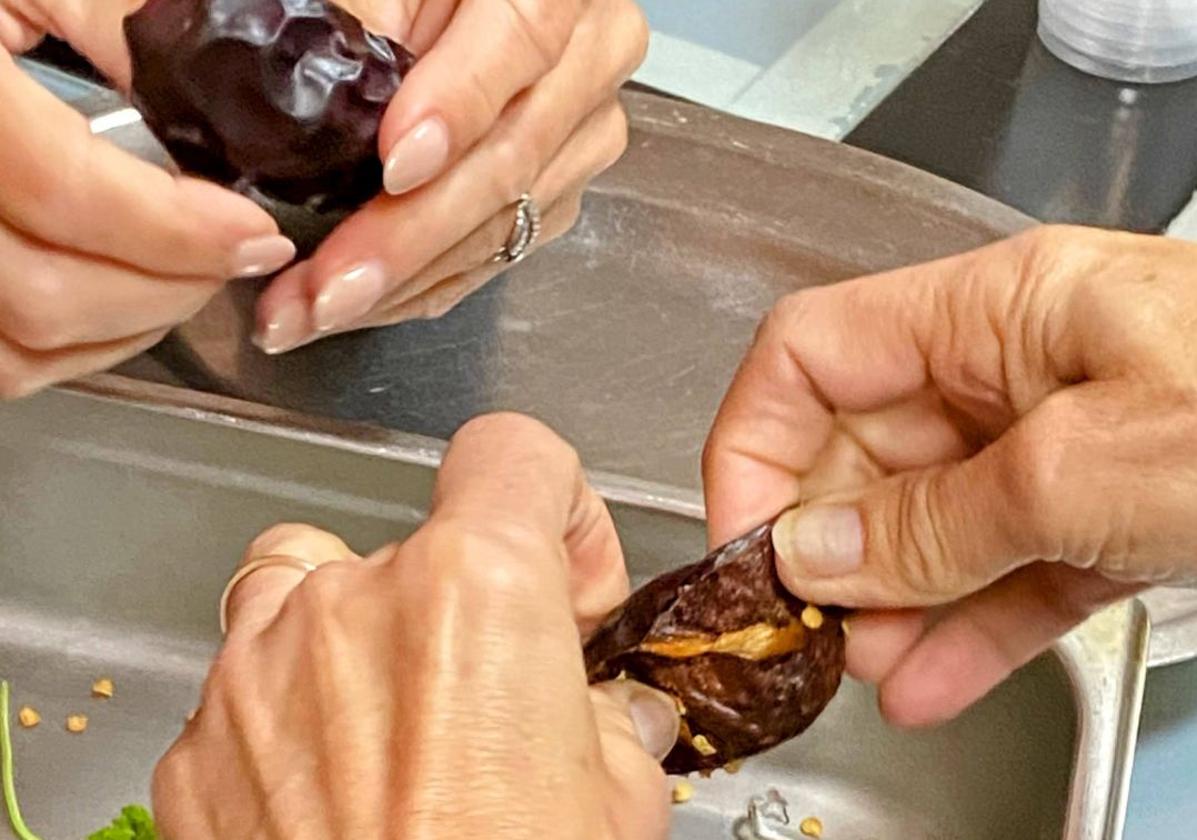
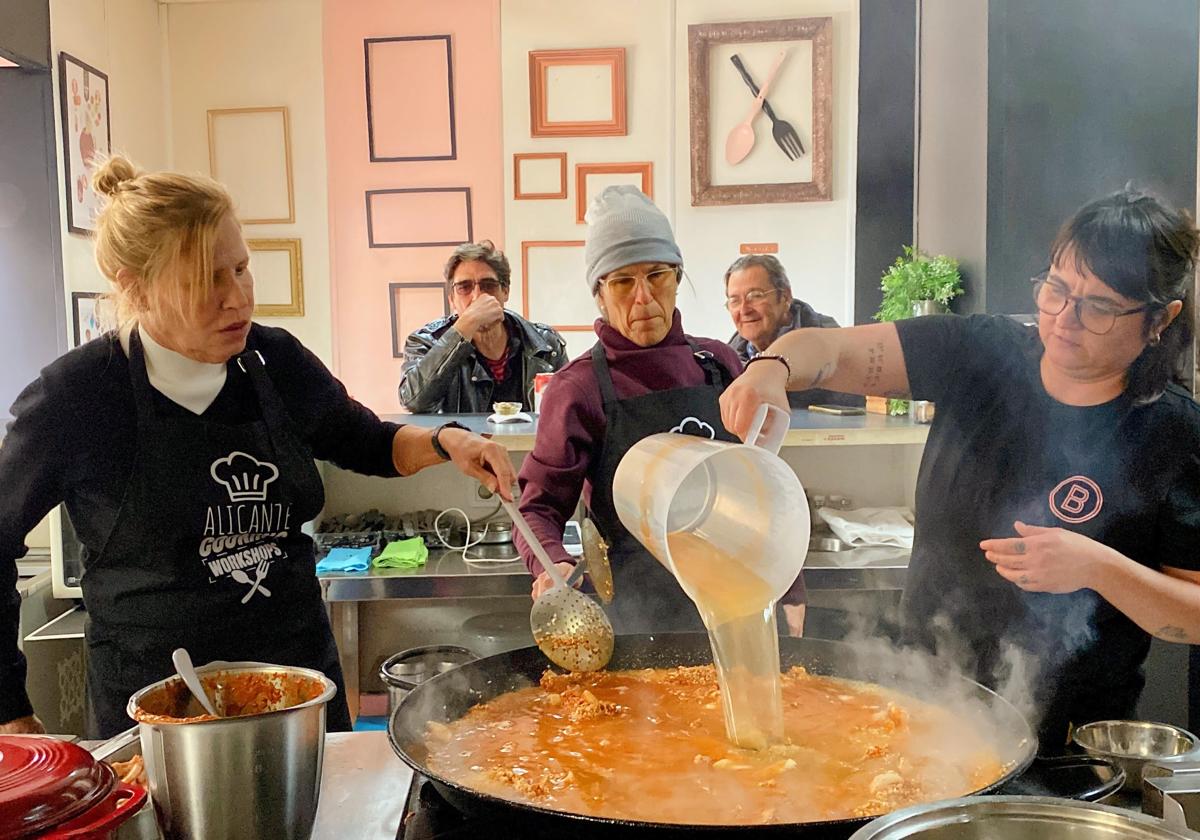
1 /
Thus, for an hour, the kitchen of the Alicante venue Bollitori becomes a hive of activity where everyone has something to do and contribute, like a family preparing Sunday lunch. "Does it always have to be yellow?", "Is it baked?", "Can it be eaten for dinner?" are some of the questions thrown into the air while the cooks and the guide do not hesitate to answer kindly, clarifying all doubts.
Afterwards, with everything ready, the preparation of the rice begins. First, the garlic, ñora, and tomato are fried to make the salmorreta. Then, the prawns and cuttlefish are sautéed with the oil in the paella (the name of the pan, not the dish), the rice is given a quick stir in the hot oil with all the flavours of the previous ingredients, the salmorreta and fish broth are added. Finally, the rice. Now, it's just a matter of waiting for the water to evaporate, infusing the dish with all its flavour.
María Campillo, the mastermind behind this idea, explains that they have been bringing tourists closer to the best of Alicante's gastronomy for over two years now, a tour that is particularly successful among countries in Northern Europe and America, such as the United States and Canada. However, she also acknowledges that "many locals from Alicante and other Spaniards have joined this guided tour as a different way to get to know the city." She highlights that in the Bollitori's dining room, "tourists gather, but also some diners who come for their prepared dishes and others who eat at the tables available in the venue." It's a space for exchange that allows the blending of two worlds coexisting in the city.
During this tour, the eight participants have gained a lifelong experience where they have been able to explore Alicante's Central Market, take a number, compare prices, and choose the best product. But they also take home recipes to replicate the best of Alicante's gastronomy in their countries. And, although during their visit to Alicante they have all tried the rice dishes in one way or another, we all know that none taste quite like the ones made at home.




